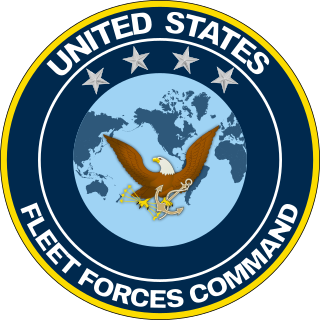
The United States Fleet Forces Command (USFF) is a service component command of the United States Navy that provides naval forces to a wide variety of U.S. forces. The naval resources may be allocated to Combatant Commanders such as United States Northern Command (USNORTHCOM) under the authority of the Secretary of Defense. Originally formed as United States Atlantic Fleet (USLANTFLT) in 1906, it has been an integral part of the defense of the United States of America since the early 20th century. In 2002, the Fleet comprised over 118,000 Navy and Marine Corps personnel serving on 186 ships and in 1,300 aircraft, with an area of responsibility ranging over most of the Atlantic Ocean from the North Pole to the South Pole, the Caribbean Sea, Gulf of Mexico, and the waters of the Pacific Ocean along the coasts of Central and South America.
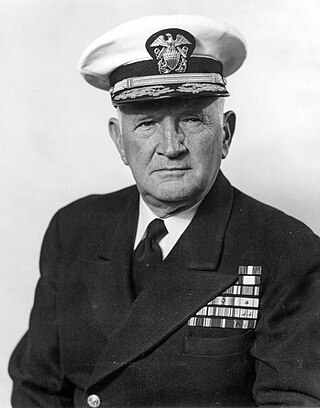
Jesse Barrett "Oley" Oldendorf was an admiral in the United States Navy, famous for defeating a Japanese force in the Battle of Leyte Gulf during World War II. He also served as commander of the American naval forces during the early phase of the Battle of the Caribbean. In early 1942, a secret group of senior Navy officers empaneled by President Franklin D. Roosevelt assessed him as one of the 40 most competent of the 120 flag officers in the Navy.
The Special Service Squadron was a component of the United States Navy during the earlier part of the 20th century. The squadron patrolled the Caribbean Sea as an instrument of gunboat diplomacy. It was headquartered in Balboa, Panama Canal Zone.
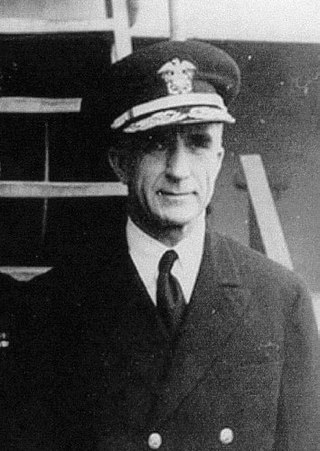
Vice Admiral Morton Lyndholm Deyo was an officer in the United States Navy, who was a naval gunfire support task force commander of World War II.
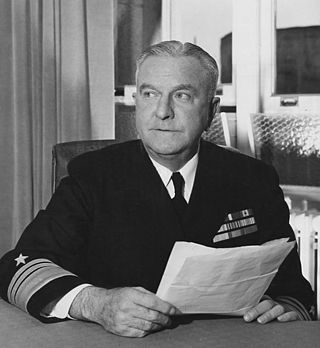
David Worth Bagley was an admiral in the United States Navy during World War II. He was also the brother of Ensign Worth Bagley, the only United States Navy officer killed in action during the Spanish–American War, and the father of Admirals David H. Bagley and Worth H. Bagley, and CIA officer Tennent H. Bagley.

Clark Howell Woodward served the United States Navy in five wars: the Spanish–American War, Philippine–American War, the Chinese Boxer Rebellion, and both World Wars. A staunch promoter of an advanced U.S. Navy, he influenced priorities and policies concerning the upgrading and construction of modern naval warships. Upon his retirement after fifty years and six months of active duty, he assured an audience at Annapolis that "the first fifty years were the hardest."

Alfred Wilkinson Johnson was a career officer of the United States Navy who served in the Spanish–American War and World War I, commanded several ships, and served as Director of Naval Intelligence, reaching the rank of Vice Admiral. He retired in December 1940.

Walter Stratton Anderson was a Vice Admiral of the United States Navy, who served as the Executive officer of USS Arizona in World War I and as Commander Battleships, Battle Force in the Pacific Fleet, and of the Gulf Sea Frontier, during World War II.
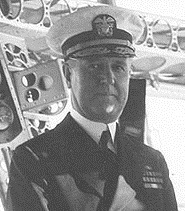
David F. Sellers was an admiral in the United States Navy. He was the first person from New Mexico to graduate from the United States Naval Academy.
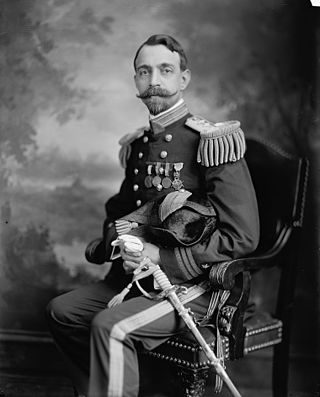
Walter Selwyn Crosley was an officer in the United States Navy. He was a recipient of the Navy Cross, the second highest military decoration for valor. He subsequently advanced to the rank of rear admiral, to date from February 17, 1927, and was transferred to the Retired List in that rank on November 1, 1935.

Herbert Fairfax Leary was a highly decorated officer in the United States Navy with the rank of vice admiral. A son of Rear Admiral Richard P. Leary, he distinguished himself during World War I while on the staff of Commander, U.S. Naval Forces in Europe under Admiral William Sims and received the Navy Cross, the United States Navy's second-highest decoration awarded for valor in combat.
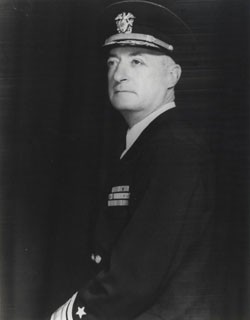
James Henry Doyle was a vice admiral in the United States Navy. During the Korean War, he commanded the U.S. Navy, Marine, and Army forces of Amphibious Group 1, and was personally responsible for the execution of the amphibious phase of the Battle of Inchon in 1950. Admiral Doyle’s naval attack force put 13,000 Marines ashore on a coastline, together with all their heavy weapons and equipment. USS Doyle was named in his honor.

Wat Tyler Cluverius Jr. was an admiral in the United States Navy and president of Worcester Polytechnic Institute. When he died, he was the last surviving officer of the sinking of USS Maine.
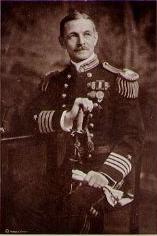
Rear Admiral Spencer Shepard Wood was a United States Navy officer. His career included service in the Spanish–American War and World War I, command of battleships and cruisers, and duty as an aide to a number of senior naval leaders.
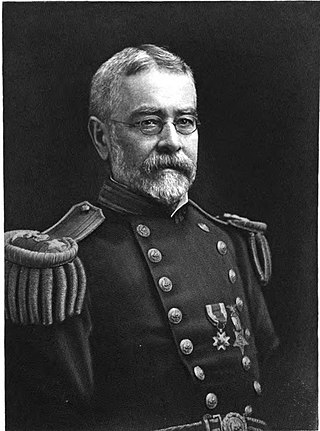
Yates Stirling was a rear admiral in the United States Navy.

Donald Bradford Beary was a vice admiral of the United States Navy. His career included service in both World War I and World War II and a tour as President of the Naval War College. He commanded a wide variety of ships and organizations, and is particularly noted for his leadership during World War II in establishing and directing a large-scale U.S. Navy training program and for his pioneering and highly successful work as a commander of U.S. Navy underway replenishment forces.
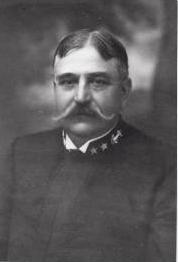
Rear Admiral John Porter Merrell was an officer in the United States Navy. He served in the Spanish–American War and as the 11th President of the Naval War College.

Rear Admiral Philip Henry Cooper was an officer in the United States Navy. He fought in the American Civil War and served as Superintendent of the United States Naval Academy and as commander-in-chief of the United States Asiatic Fleet.

Rear Admiral Thomas Pickett Magruder was a decorated flag officer of the United States Navy who became controversial for his 1927 critique of Navy operational practices.

Laurance Toombs DuBose was a highly decorated officer in the United States Navy with the rank of four-star Admiral. A veteran of several conflicts, including both World Wars, he distinguished himself several times as Commanding officer of heavy cruiser USS Portland and Commander, Cruiser Division 13 in the Pacific theater of World War II and received three awards of Navy Cross, the United States Navy second-highest decoration awarded for valor in combat.



















